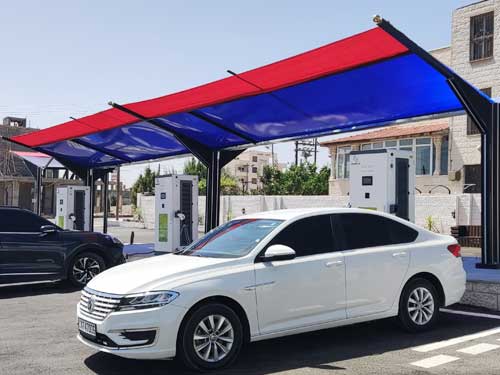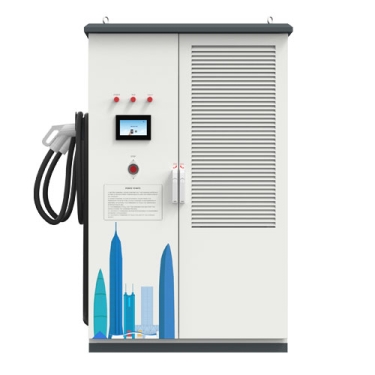- Visitors:0 Views
- Time:2025-04-11
charging stations romania
Charging stations romania: a breakthrough for the Eastern European new energy corridor
1. Market gap and transformation opportunities
Romania has more than 100,000 electric vehicles, but there are only 6,800 public chargers, with an electric vehicle to charger ratio of 14.7:1. The EU Alternative Fuels Infrastructure Regulation (AFIR) requires at least one fast charging station to be deployed for every 60 kilometers of highway by 2025, while the current charging blind spot in the Bucharest-Cluj corridor is still over 200 kilometers.
2. Localized solution implementation
2.1. Danube Delta photovoltaic storage charging system
For the delta region with weak power grid, Hongjiali 300kW photovoltaic + 1MWh energy storage charging station is deployed, which can serve 50 electric vehicles per day and reduce the use of diesel generators by 90%.
2.2. Intelligent power dynamic allocation
Hongjiali charger technology realizes intelligent power adjustment from 22kW to 240kW. The parking lot in the center of Bucharest is being renovated. A single station can accommodate 8 vehicles charging at the same time, and the equipment utilization rate is increased to 75%.
2.3. Supercharging network for cross-border transportation hubs
Six 600kW liquid-cooled supercharging stations will be built on the A1 highway (connecting Hungary and Bulgaria), equipped with Hongjiali dual-gun terminals, which can provide 400 kilometers of battery life in 15 minutes, and shorten the charging time of cross-border logistics vehicles by 60%.
3. Policy-driven and business model
3.1. Activation of EU funds
Using the "Fair Transition Fund" to subsidize 40% of the construction cost of charging stations, the Constanta Port photovoltaic storage and charging project received 8.2 million euros in funding, and it is expected to reduce carbon dioxide emissions by 18,000 tons per year after it is put into operation in 2025.
3.2. Peak-valley electricity price arbitrage
Hongjiali's energy management system integrates energy storage and charging loads, stores electricity during low electricity price periods, and releases it during peak periods, increasing the operator's annual revenue per station by 23,000 euros.
3.3. Vehicle-to-grid interaction (V2G) pilot
Iasi City deploys 50 bidirectional chargers. Electric vehicles can reverse power supply during peak hours. Car owners can earn 120 euros per month, and the peak-shaving capacity of the power grid will increase by 15%.

4. Challenges and future layout
Currently, the coverage rate of chargers in rural areas of Romania is less than 12%, and 30% of the existing equipment has a power of less than 50kW. The government plans to:
Build 1,200 new fast-charging stations by 2026, focusing on 16 charging desert counties;
New commercial buildings are required to reserve 20% of parking spaces for charging interfaces;
Romania's charging network is shifting from a "point-like layout" to a "vertical and horizontal network". Through the coordination of photovoltaic storage and charging, cross-border standard unification and localized technology adaptation, it is accelerating to become a key node in the Eastern European electric vehicle ecosystem.
Recommended Reading
- 2023 National Day Holiday Notice2023-09-25
Hongjiali New Energy National
- Hongjiali EV Asia 2024 Exhibition Concluded Succes...2024-07-09
Hongjiali EV Asia 2024 Exhibition Concluded Succes...
- Notice of Labor Day Holiday in 20242024-04-27
Notice of Labor Day Holiday in
- ev chargers in india2024-03-20
Hongjiali New Energy Co., Ltd.
- invest in ev chargers2025-03-13
Against the backdrop of global energy transformati...
- charging station companies2023-09-05
Upgrade your company's infrast
- What size cable is needed for 22kW EV charger?2024-12-13
What size cable is needed for
- How much is a charger for an electric car2024-12-31
How much is a charger for an electric car? The pri...
- where are charging stations for electric cars2023-12-18
Where are charging stations fo
Hot Products
-
fast charging station
Fast charger 360KW 2 port charging stati
Get last price
-
portable ev car charger
Portable electric car charger output pow
Get last price
-
electric vehicle supply e...
Brand: HJLplace of origin: ChinaPower: 3
Get last price
-
super ev charger
480KW super ev charger size: L1200*W750*
Get last price



